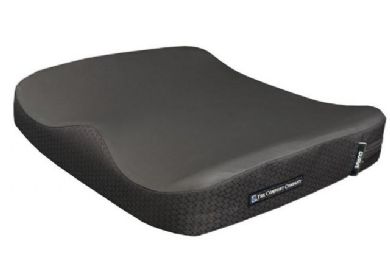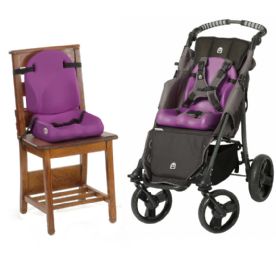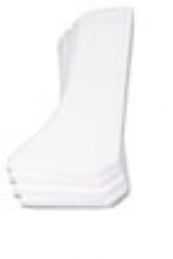


What are Pediatric Wheelchair Positioning Aids?
Products designed to help position children properly in a wheelchair include different types of chest harnesses and posture support straps. Because posture and body movements go hand-in-hand, aids that help the wheelchair-bound user remain comfortable also fall into this product category.
Wheelchair cushions, anti-slip seat covers, foot and leg protectors and leg straps are a few such examples. These products minimize discomfort and squirming in the wheelchair seat. If left uncorrected, both can lead to poor body positioning and permanent spinal distortion.
Why Are These Positioning Aids Needed?
Sometimes children need special positioning, or more support than that normally provided by an ordinary wheelchair. Needs vary, and each child presents unique requirements. Carefully review a child’s specific needs before adapting a wheelchair or providing special seating to ensure proper fit, comfort and safety for the child.
Pediatric wheelchair positioning aids like the positioning vest, the clear chest support, and chest harnesses will help those children who tend to fall forward or lean too far to one side.
It could be that the wheelchair being used is too big for the child, or the wheelchair model doesn’t support the patient well. Issues can arise from wheelchairs with cloth backs that sag or backs that tilt back too far.
An upright back that’s fairly stiff attached at a right angle to the seat works best for developing and maintaining good posture. For proper fit, the child’s hips should reach the back of the chair.
(If the only wheelchair available is too large for the child, you’ll find more useful accessories to address the situation in the product category Wheelchair Accessories.)
It’s important to note that the wheelchair positioning aids discussed here are not restraints and not safety devices. They’re designed only to help with positioning a child properly in the wheelchair.
Who Uses the Positioning Aids?
The underlying cause of awkward or unsafe positioning in a wheelchair may be a spinal cord injury or a congenital condition such as cerebral palsy or spina bifida. It also could be the result of a disease like severe polio. Children with these complaints typically suffer from weakened hips and/or a weak back and low muscle tone.
All of which can cause them to sit in a slumped position with their spine severely curved. As a result, the hips tilt back. This posture can lead to pulmonary difficulties and permanent deformity.
How Are Positioning Aids Used?
Most of the wheelchair positioning aids can be used in standard or high-backed wheelchairs, though the appropriate model to choose may vary. Positioning devices that include straps may offer options for positioning the straps.
All offer upper body support to help stabilize body position, promote the correct sitting posture, and maintain sitting stability.
High-density molded foam wheelchair cushions with lateral leg contours promote postural alignment. So do the built-in medial thigh separator and the anti-thrust shelf included in some of the cushions. These cushions are designed to reduce potential high-pressure spots, providing relief from pressure on bony areas.
Special fabrics allow air to flow freely, reducing discomfort caused by overheating. Some materials offer particular incontinence protection and easy cleanup. Reducing friction also helps reduce the incidence of skin breakdown.
It’s recommended that caregivers evaluate how a child uses the wheelchair with a positioning device, before fitting the aid permanently. And it’s good practice to check often to ensure the aid continues to help the child’s wheelchair position.
As children grow, their needs may change and so should the proffered solution.
Rehabmart is delighted to offer high-quality, innovative products from well-known manufacturers that include Patterson Medical, Comfort Company, Grip-Solutions, Danmar, and Skil-Care.
Hulet Smith, OTR/L
Rehabmart Co-Founder & CEO
nrb